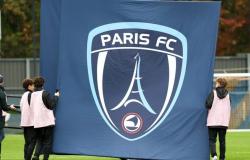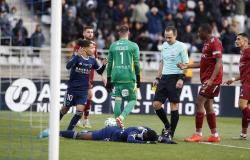At 51, the sculptor and designer Guillaume Bardet, living in Dieulefit, is still struggling to realize what is happening to him: his project was selected, among 70 others, to design and manufacture the liturgical furniture of Notre-Dame-de-Paris. . “Intellectually, I’m happy, Notre-Dame speaks to everyone, but I haven’t digested the news yet”. On June 23, the diocese of Paris announced to him that he had been chosen to manufacture the five main elements of liturgical furniture: the altar, the tabernacle, the baptistery, the ambo and the cathedra. The result of six months of intense work, especially to make the models, 1/5th version, one of the details that made the difference.
–
Guillaume Bardet

–
Guillaume Bardet

–
Guillaume Bardet

–
Guillaume Bardet

–
Guillaume Bardet
The project was designed and presented as a duo, with the Barthelemy Arts foundry, from Crestand its director Pierre Abattu, an art foundry specializing in bronze. “There had to be a mutual desire, because the bronze imposed itself on me, when I entered Notre-Dame, the presence of the stone. To make exist simply, without great artillery, the liturgical elements , it needed the power of bronze”. Bronze is one of the elements that convinced the jury, Guillaume Bardet was the only one among the five finalists to have made this choice. “I wanted something simple, immutable, powerful. Especially not controversial: that Christians find themselves there, but that it also speaks to non-Christians, visitors“ explains the artist.
At work, with pleasure
From now on, it is necessary to manufacture the models, to bring them to the foundry, which will take care of the rest. “First, we make a silicone elastomer mold with plaster screeds, which makes it possible to reproduce, in wax, the identical sculpture”explains André Mariani, molding manager, “We are lucky to participate in this restoration, Notre-Dame is close to the hearts of everyone here”. After several complex steps and a lot of know-how, the wax sculpture, hollow like bronze, is ready: it will be used to make the final mould, the one in which the bronze is cast, before the finishing part, patina. “We will find ourselves next to stonemasons, cabinetmakers, renowned carpenters, it’s exhilarating, of course there is work but we are super happy“, smiles Guillaume Serre, foreman. The owner of the foundry, Pierre Abattu, adds: “I took a while to realize, but we’re going to go down in history, the artist especially, but us a little too. Is it scary? Yes of course a little, but we’re going to get to work”. The five elements must be delivered before October 2024.
About the artist
A designer by training, Guillaume Bardet has been living in the Drôme, in Dieulefit, since 2008, a family home he has always known. He graduated from the School of Decorative Arts in Paris. After a project around stone, at the Villa Medici in Rome, when he was 30, he began to collaborate with galleries and gradually turned towards sculpture. Arriving in Dieulefit, he embarked on a project, “the use of days”. He draws an object a day for a year, objects then made by himself and ceramists from the village and surroundings. The project travels across Europe, and leads him to visit, via a collaborator, the Barthelemy Arts foundry. “I saw that bronze was an incredible tool, a mixture of stone and earth, moldable like earth, with the power of stone”. He progresses and ends up creating a representation of the Last Supper: a table, thirteen stools, and a chandelier. It was then exhibited in Sainte-Marie-de-La-Tourette (Rhône), then in Paris. “And when I was assembling the exhibition, right next to Notre-Dame, the cathedral was burning. There was an end-of-the-world light in Paris, a strange smell, it marked me. Two days later I had the vernissage, and several people told me that the table (of the Last Supper) in bronze was the next altar of Notre-Dame. The idea germinated, I began to feel legitimate.” When the call for projects comes out, he applies, is selected among the five finalists, hesitates before the specifications, then imagines the furniture finally selected.

–
Guillaume Bardet












